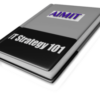Leveraging Direct Connections: Using Activity Feed and In-Messaging to Win Clients
In consulting, relationships aren’t built overnight—but they can begin with a single, genuine interaction.
Every seasoned consultant knows that the strength and depth of their relationships determine their professional success. Whether you’re cultivating new leads, nurturing long-standing client partnerships, or converting opportunities into lucrative engagements, personalized communication is your greatest asset. Yet, despite its evident power, many consultants still underestimate the strategic advantage of authentic and timely interactions, especially when engaging online. Today’s clients are inundated with generic outreach, templated pitches, and superficial touchpoints. Standing out requires more than just expertise—it demands genuine, thoughtful engagement at precisely the right moment.
Consulting thrives on trust and credibility, attributes that cannot be hurried or artificially manufactured. The journey from an initial contact to a trusted advisor is intricate and nuanced, but the foundation is surprisingly simple: genuine interaction that signals a sincere interest in the client’s needs, goals, and perspectives. Each exchange that demonstrates understanding, empathy, and targeted value adds layers of trust, building toward meaningful professional relationships that often translate into lasting business.
Yet, meaningful connections are rarely accidental. Successful consultants actively create and nurture these interactions by thoughtfully engaging with prospects and clients in environments tailored for professional dialogue. In this context, CIO Index offers consultants unique tools designed explicitly to facilitate authentic and productive connections. The Activity Feed and In-Messaging features provided by CIO Index represent a powerful duo, equipping consultants with an intuitive and seamless environment to build these crucial relationships.
The CIO Index Activity Feed acts as a pulse-check on your prospective and current clients, providing real-time insight into their interests, challenges, and evolving business concerns. By actively monitoring and engaging through the Activity Feed, consultants can strategically initiate conversations that resonate deeply with their contacts’ current professional context. Unlike generic networking platforms, the CIO Index Activity Feed positions you to engage naturally and contextually, turning simple interactions into significant opportunities for meaningful dialogue.
Similarly, CIO Index’s In-Messaging feature amplifies the potential for personalized outreach by enabling direct, immediate communication without barriers. It allows consultants to build upon interactions from the Activity Feed, transforming public exchanges into private, focused conversations. This ability to effortlessly shift from observing client interests to engaging with customized, direct messages provides consultants with unmatched leverage to position themselves as insightful, proactive, and genuinely interested partners.
Together, these tools create a seamless pathway from initial contact through authentic engagement to eventual consulting opportunities. Rather than relying on cold, impersonal outreach, consultants using CIO Index can develop natural, sustained relationships rooted in understanding, insight, and responsiveness.
This article will delve deeply into the strategies that maximize the effectiveness of the Activity Feed and In-Messaging on CIO Index. We will explore proven approaches for initiating and maintaining meaningful conversations, crafting compelling personalized messages, and ultimately transforming interactions into profitable consulting engagements. In consulting, the power of a single genuine interaction should never be underestimated. Leveraging CIO Index’s direct connection tools, you’ll learn how to turn each thoughtful interaction into the building blocks of sustained professional success.
The Power of Direct Connections
In the realm of consulting, the difference between securing a new client and losing an opportunity often hinges on a single, personalized interaction. Clients seek not just expertise, but authenticity, understanding, and genuine rapport. Personalized communication sends a clear signal: you are not just another vendor, but a thoughtful partner who genuinely cares about their specific challenges and objectives. In a crowded market where prospective clients receive dozens—if not hundreds—of impersonal messages every week, personalization is your strongest differentiator.
Research consistently highlights the effectiveness of personalized communication in professional interactions. According to a study by McKinsey & Company, personalized outreach is not merely appreciated but expected, with organizations seeing a significant uptick—often between 10% and 30%—in engagement and response rates when communications are tailored directly to the recipient’s unique context or interests. Similarly, HubSpot reports that personalized emails alone have an average open rate that’s approximately 26% higher than generic communications, and generate transaction rates that can be up to six times higher.
These statistics underscore a fundamental reality: today’s clients value and respond positively to communications that demonstrate personalized insight and targeted relevance. Consultants who effectively harness personalized messages are seen as attentive, trustworthy, and deeply engaged—traits that clients naturally associate with the type of professional partner they want by their side when navigating complex business challenges.
Consider, for example, the perspective offered by renowned business strategist Simon Sinek, who emphasizes authenticity in professional interactions: “People don’t buy what you do; they buy why you do it. And what you do simply proves what you believe.” Authentic engagement that reflects genuine interest and clearly communicates your intention to support and partner with your client resonates far deeper than standard sales pitches or generic outreach. Such authenticity is memorable, often serving as the cornerstone of long-term client relationships.
Real-world examples illustrate the profound impact authentic communication can have. One consulting professional noted that after transitioning from generic messaging to a personalized outreach strategy—leveraging insights from clients’ online activity and interactions—response rates nearly doubled. Clients felt recognized, understood, and respected, which led directly to increased dialogue, stronger relationships, and ultimately, greater business opportunities.
By prioritizing authentic, personalized interactions, consultants not only differentiate themselves from competitors but also position themselves as strategic allies rather than transactional service providers. Such direct connections foster trust, deepen relationships, and ultimately, enhance your reputation and success as a consultant.
Understanding the Tools: Activity Feed & In-Messaging
To effectively leverage direct connections, consultants must understand—and strategically use—the right tools. CIO Index provides two powerful resources explicitly designed to facilitate personalized, real-time engagement: the Activity Feed and the In-Messaging feature. When used intentionally, these tools transform casual online interactions into purposeful conversations, creating clear pathways toward meaningful consulting relationships.
Activity Feed: Your Real-Time Window into Client Interests
The CIO Index Activity Feed acts as an interactive hub, giving consultants instant visibility into the latest activities, interests, and conversations occurring within the CIO community. It’s not merely a passive dashboard; it’s an actionable intelligence tool. Through the Activity Feed, consultants can observe client and prospect interactions, posts, comments, and engagements, quickly gleaning insights into pressing issues, emerging trends, and opportunities for strategic intervention.
Savvy consultants use the Activity Feed to spot critical cues indicating potential consulting opportunities. For example, if a CIO regularly comments on cybersecurity-related topics or posts about cloud migration challenges, a consultant specializing in these areas can proactively join the conversation. This targeted interaction positions the consultant as responsive, knowledgeable, and genuinely interested in helping the client solve real-world challenges. Thus, the Activity Feed not only keeps consultants informed but also empowers them to engage contextually—turning observation into opportunities.
In-Messaging: Transforming Conversations into Relationships
Complementing the Activity Feed is CIO Index’s powerful In-Messaging capability, a tool designed for immediate and direct conversations. Unlike generic email or public comments, In-Messaging enables consultants to quickly and discreetly transition interactions from a public forum into a private dialogue, facilitating deeper, more meaningful exchanges.
In-Messaging excels because it combines immediacy with intimacy—two essential qualities in relationship-building. Immediacy allows consultants to engage promptly when a client’s interest or need is at its peak. For instance, immediately following an engaging conversation or post interaction, consultants can send personalized follow-up messages, capitalizing on the momentum created by real-time interactions.
Intimacy, meanwhile, allows the conversation to move beyond superficial engagement toward meaningful dialogue. Consultants can leverage In-Messaging to build rapport by asking targeted, insightful questions that demonstrate genuine interest and understanding. Over time, these one-on-one interactions create an atmosphere of trust and personalized attention, essential for transforming casual discussions into actionable consulting engagements.
The importance of immediacy and intimacy cannot be overstated. A client who experiences prompt, insightful communication feels valued and prioritized, significantly increasing the likelihood of progressing toward a formal consulting relationship. Thus, leveraging CIO Index’s In-Messaging is a critical step toward establishing the kind of genuine connections that distinguish highly successful consultants from their competition.
Together, the Activity Feed and In-Messaging create a powerful combination, equipping consultants with the tools needed to proactively identify, engage, and nurture client relationships effectively.
Engaging with Intent: Activity Feed Best Practices
Effectively leveraging the Activity Feed on CIO Index requires more than casual observation—it demands strategic intent, thoughtful participation, and consistent interaction. To truly differentiate yourself as a consultant and foster deeper client relationships, here are best practices for making your engagement purposeful, relevant, and compelling.
Responding Thoughtfully to Posts
Thoughtful responses demonstrate genuine engagement and position you as a trusted voice in your area of expertise. Rather than simply acknowledging posts with generic statements like “Interesting!” or “Agreed,” respond with insights or follow-up questions that move the conversation forward. For example, if a CIO posts about struggles with cloud cost management, your response might include:
“Great points—managing cloud costs effectively is indeed challenging. Have you considered leveraging predictive analytics to forecast usage spikes? I’ve seen companies reduce unexpected costs significantly using this approach.”
Such thoughtful replies signal your understanding of the issue and your willingness to add meaningful value immediately.
Initiating Insightful Discussions to Showcase Expertise
Another effective strategy is proactively initiating discussions that highlight your expertise and provoke meaningful dialogue. Start conversations around relevant trends, recent research, or common client challenges. Ensure these discussions are framed in a way that invites input rather than merely broadcasting your viewpoint.
For instance, a cybersecurity consultant might post:
“With recent high-profile data breaches making headlines, I’ve observed growing concern about AI-driven threats. How are you approaching the integration of AI tools into your cybersecurity strategy? Would love to hear insights and share best practices.”
By initiating thoughtful, relevant discussions, you position yourself as both knowledgeable and approachable, creating organic opportunities for further engagement.
Recognizing Engagement Patterns to Tailor Messaging
Paying attention to engagement patterns enables consultants to tailor interactions to specific client interests or behaviors. Recognize who consistently engages with particular topics, posts frequently about specific challenges, or regularly interacts at certain times. Use this insight to inform both your public comments and private messages.
For example, if you notice a CIO regularly interacts with posts about digital transformation and cloud migration late in the day, consider timing your responses or messages accordingly, such as:
“I noticed you’ve been exploring digital transformation challenges lately. Given your interest, I thought I’d share a recent study on common pitfalls and solutions in large-scale cloud migrations. I’d love your thoughts.”
This targeted, pattern-based approach demonstrates attentiveness and strategic intent.
Practical Tips for Successful Engagements
- Consistency is Key: Regular interaction establishes familiarity and trust. Engage consistently, even briefly, to remain visible and relevant.
- Balance Expertise and Humility: Share your knowledge confidently but avoid dominating conversations. Listen actively and acknowledge the value others bring.
- Ask Open-ended Questions: Encourage deeper interaction and dialogue, creating pathways for longer, more meaningful exchanges.
- Quick Response Matters: Respond promptly to maintain momentum and demonstrate genuine interest.
Consider a practical example:
A consultant noticed a CIO repeatedly commenting on hybrid workplace challenges. The consultant initiated a thoughtful post inviting others to discuss best practices in managing hybrid teams. After several meaningful exchanges, the consultant transitioned the dialogue to In-Messaging, offering tailored insights and proposing a focused consultation, resulting in a new client engagement.
By thoughtfully responding, initiating insightful discussions, and tailoring your approach based on engagement patterns, you can effectively use CIO Index’s Activity Feed to build lasting, impactful consulting relationships.
Crafting Messages That Resonate
The success of personalized outreach hinges on crafting messages that resonate deeply with your recipients. Generic communication is easily ignored, but thoughtfully tailored messages capture attention, build credibility, and establish the foundation for fruitful interactions. Effective messages share several common elements that, when combined strategically, create compelling opportunities for meaningful dialogue.
Anatomy of an Effective Message
1. Personalized Greeting:
Begin your message with a warm, personalized greeting that immediately conveys your genuine interest in the recipient. Simple personalization, such as using the person’s name, transforms your outreach from impersonal to human, setting a friendly and respectful tone.
- Example:
“Hi Maria, hope you’re doing well!”
2. Relevant Reference to Previous Interactions:
Mentioning specific insights or interactions from the Activity Feed adds context, relevance, and authenticity to your message. It shows recipients you’ve been paying attention, enhancing your credibility and demonstrating genuine interest in their perspectives or concerns.
- Example:
“I appreciated your recent comments on the challenges of migrating legacy systems—I found your points about balancing disruption and innovation particularly insightful.”
3. Clear Value Proposition or Insightful Comment:
Clearly articulate the value you’re providing or contribute an insightful perspective relevant to their interests. Rather than directly pitching services, offer knowledge, expertise, or solutions that immediately demonstrate the value of further dialogue.
- Example:
“Based on your insights, I wanted to share a framework we recently developed that simplifies legacy migrations, potentially reducing costs and downtime significantly.”
4. Call-to-Action that Fosters Further Dialogue:
Conclude your message with a clear, inviting call-to-action (CTA). The CTA should encourage further conversation rather than pushing for immediate business discussions, fostering an open and natural dialogue.
- Example:
“Would you be open to a brief conversation next week to explore this further? I’d be interested to hear more about your specific experiences and share some additional thoughts.”
Examples of Successful Messages that Led to Client Relationships
Example 1:
A consultant specializing in digital transformation sent this message after observing a CIO repeatedly interacting with posts about cloud strategy:
“Hi Alex, I noticed your insightful contributions around cloud infrastructure optimization, particularly your recent comments about managing cost overruns. We recently completed a benchmark study identifying hidden factors impacting cloud spending. If you’re interested, I’d be happy to discuss how these findings might align with your experiences. Would a brief call next week work for you?”
Outcome: The CIO responded positively, leading to a meaningful conversation and eventually, a consulting engagement.
Example 2:
A cybersecurity consultant reached out to a CIO who had actively engaged in discussions about emerging threats:
“Hello Jennifer, your recent commentary on AI-driven cybersecurity threats was spot-on. We recently conducted a review of the latest strategies companies are employing to tackle these challenges effectively. Given your interest, perhaps we could connect briefly—I’d love to share some insights and hear more about your organization’s approach. Would Wednesday afternoon work for a quick chat?”
Outcome: The targeted insight led directly to a call and later evolved into a significant consulting relationship.
Crafting messages that resonate requires intentionality, personalization, and strategic use of the insights gathered from your interactions. When executed effectively, your messages become more than outreach—they become meaningful exchanges that naturally evolve into valuable consulting engagements.
Turning Engagement into Opportunities
Transforming casual interactions into tangible consulting opportunities is an art, requiring consultants to strike a delicate balance between authentic connection and strategic intent. While initial engagement lays the foundation, understanding when and how to transition naturally from conversation to opportunity distinguishes exceptional consultants from the average.
Moving from Casual Conversation to Business Discussions Naturally
Transitioning from casual exchanges to substantive business discussions must feel seamless and unforced. Effective consultants navigate this transition by connecting the conversation to explicit client interests, challenges, or objectives revealed during earlier interactions. The key is subtlety—emphasizing shared interests or expertise rather than overtly pitching services.
For instance, after several engaging discussions around data privacy, you might say:
“I’ve noticed you’re deeply focused on data privacy compliance. Recently, I’ve been working on a methodology that streamlines compliance audits significantly. Would it be useful to discuss this approach further?”
This approach respects the authenticity of your relationship while naturally steering the conversation toward deeper professional collaboration.
Recognizing Signals for Deeper Conversation
Clients often signal readiness for more substantive discussions through subtle indicators. Successful consultants recognize and respond to these signals promptly. Key indicators include:
- Increased Depth of Engagement: Clients begin asking detailed, probing questions.
- Personalized Responses: Clients mention specific organizational challenges or goals.
- Requests for Insights or Resources: Clients explicitly or implicitly seek deeper expertise or assistance.
- Direct Invitations: Clients suggest follow-up calls or express interest in continued dialogue.
For example, a client might say:
“Your insights on legacy modernization have been really helpful—our team struggles with similar challenges. I’d be interested to hear more about your experiences with organizations like ours.”
This direct expression of interest is a clear invitation to deepen the conversation.
Strategies for Professional, Authentic Follow-Up
Professional follow-up maintains momentum without pressuring the client. Effective follow-up is structured, timely, and continues to offer value. Key strategies include:
- Timely, Personalized Responses: Respond quickly after meaningful interactions to reinforce interest and commitment.
- Sharing Relevant Resources: Provide articles, reports, case studies, or whitepapers that directly align with client interests or challenges.
- Proposing Structured Next Steps: Suggest clear next actions, such as a brief call, virtual coffee, or collaborative session, framed as mutually beneficial exploration rather than a sales pitch.
For example:
“I really enjoyed our recent conversation about agile adoption. Given your interest, I thought this case study on agile transformation at a similar-sized organization might resonate. Would you be open to a brief follow-up discussion to explore potential parallels with your situation?”
Such a message maintains professionalism and authenticity, reinforcing your role as a valuable resource and partner.
By mastering the transition from casual engagement to targeted business dialogue, consultants create opportunities organically, deepening client relationships, and securing meaningful consulting engagements in a genuine, impactful way.
Common Mistakes to Avoid
Even seasoned consultants sometimes stumble by making common mistakes that undermine their ability to build meaningful relationships. Recognizing—and avoiding—these missteps ensures your outreach remains effective, authentic, and welcomed by potential clients. Below are three critical pitfalls consultants should avoid:
1. Overly Generic Messages
Generic messages are one of the fastest ways to lose credibility and opportunities. Consultants often default to templated, impersonal outreach due to time constraints, but such messages rarely resonate and can inadvertently communicate disinterest or laziness.
- Impact: Clients receive numerous generic messages daily, leading to immediate dismissal of your outreach.
- How to Avoid: Always include personalization, referencing prior interactions or specific insights gathered from client activities.
- Example of Generic Outreach:
“Hello, I noticed your profile. I’d love to connect and discuss how we might collaborate.”
Improved Approach:
“Hi Sarah, your recent insights on the challenges of hybrid team management were really insightful—I’d love to exchange some ideas around optimizing remote collaboration. Would you be open to a quick chat?”
2. Ignoring Client Activity Insights Provided by the Activity Feed
Despite having valuable information at their fingertips, some consultants fail to leverage insights from CIO Index’s Activity Feed, missing significant engagement opportunities.
- Impact: Ignoring Activity Feed insights results in misaligned or irrelevant communication, diminishing your perceived relevance and effectiveness.
- How to Avoid: Regularly review and analyze client interactions to gain context and tailor your messages accordingly.
- Example of Overlooking Activity Insights:
Sending a message about cloud migration services when the client has consistently shown interest in cybersecurity.Improved Approach:
“I noticed your consistent engagement around cybersecurity trends and threat prevention strategies. I recently published a practical guide on integrating zero-trust security models—I thought you might find it relevant given your interests.”
3. Overwhelming Contacts with Too Frequent or Aggressive Outreach
Persistent follow-up can demonstrate enthusiasm, but overly aggressive or frequent outreach can quickly cross the line, creating discomfort and negatively impacting your professional reputation.
- Impact: Clients may withdraw, ignore your future communications, or perceive you as desperate or intrusive.
- How to Avoid: Pace your outreach thoughtfully. Allow sufficient space between interactions and maintain a respectful, non-pressuring tone.
- Example of Aggressive Outreach:
“I emailed earlier today but didn’t hear back. Can you respond ASAP so we can set up a call?”
Improved Approach:
After giving a reasonable period, send a polite, low-pressure follow-up:“I wanted to gently follow up on our previous exchange. If you’re still interested, I’d love to schedule a brief call at your convenience. Let me know what works best for you.”
By consciously avoiding these common pitfalls—overly generic outreach, ignoring client insights, and aggressive messaging—you can ensure your interactions remain genuine, strategic, and effective in creating lasting, valuable client relationships.
Conclusion: Building Sustainable Connections
In the world of consulting, long-term success isn’t built on chance encounters—it’s cultivated through consistent, authentic, and responsive engagement. Each meaningful interaction, however small, adds to your credibility, strengthens trust, and moves you closer to becoming a valued advisor. The consultants who thrive aren’t those who talk the loudest—they’re the ones who listen well, engage intentionally, and show up consistently with something relevant to say.
The tools offered by CIO Index—the Activity Feed and In-Messaging—are purpose-built to support this kind of engagement. The Activity Feed gives you a real-time window into what matters to your prospects and clients, allowing you to respond with insight, relevance, and timeliness. In-Messaging gives you a direct line of communication to deepen those interactions with thoughtful, one-on-one conversation. Together, they help you move from awareness to relationship to opportunity—without ever compromising authenticity.
Ultimately, building sustainable consulting relationships is about being present. It’s about showing up—not just to pitch a service, but to participate in a conversation, offer real value, and be genuinely helpful. That’s the kind of presence clients remember. That’s what leads to trust. And trust is what leads to business.
So use the tools. But more importantly, bring your whole self to the interaction. Read carefully. Respond thoughtfully. Reach out meaningfully. And do it consistently. Because it’s not just about winning the next client—it’s about building a network of relationships that will sustain your consulting practice for years to come.








